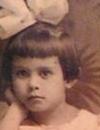![]()
This museum on the banks of the Hudson river in Beacon, New York is a must-see for those visiting NYC. The collection consists of various rooms dedicated to the most important artists of the second half of the 20th century. It is certainly the place to go if you want to spend a whole day looking at, reflecting on and interacting with art.
Dia Beacon is part of the Dia Art Foundation, founded in 1974 with an ambitious goal: to create one of the most significant exhibitions of the most influential artists of the 60s and 70s. The Foundation has carried out many Important projects thanks to the patronage and passion of Philippa de Menil and Heiner Friedrich, and it is to them that we owe the collection of a vast number of pieces by each of the artists, allowing for an in-depth view of their work.
Each space is filled with the very best work by each represented artist.
In the room dedicated to John Chamberlain, we enter a world of sculptures made out of pressed and contorted cars, the sculptures becoming solid, three-dimensional affirmations of expressionist abstract art. The artist, in his economically precarious youth, would pick up objects and materials found strewn about on the street and use them in his artwork. From an early age, he understood that everyday objects could be given new meaning and that using them as art pieces could unlock unexpected connections and emotions.
Chamberlain gradually improved his technique - in his later work he would finish his steel sculptures with varnished coatings to achieve bolder, more strident effects.
I’m a big admirer of Louise Bourgeois. The room dedicated to her work is nothing short of exceptional, and is incidentally an unexpected delight for anyone with a strong interest in Freudian psychoanalysis. The artist draws inspiration for her work from an obsession with her own past and with her childhood traumas that she is unable to overcome nor acknowledge, and which time and again return to her present. She banishes this obsessive past with a cathartic asceticism through artistic creation.
Her childhood and the relationship with her parents both left lifelong marks in her life, and these traumas inform all her work. The Destruction of the Father (1974), for example, is a representation of the artist murdering her own father, and is a likely metaphor of the Oedipus complex (Freud).
![]()
The monumental work Spider, a somewhat dream-like piece, represents the artist’s mother dutifully repairing tapestries, much like a hard-working spider patiently repairs its web after it is broken by an exterior hand. A clear allegory of her mother’s life and of the humiliation she suffered at the hand of her husband and his extra-marital affair with the family nanny - an experience which deeply scarred artist.
The phallus is a central theme in her work, penis envy being another Freudian concept developed in his theories on childhood and sexual activity. This psychological concept is intensified in Bourgeois’ case, due to her father wanting a son rather than a daughter, and the following disappointment he experienced as well as the humiliations he subjected Louise to as a result.
There is a constant reminiscence of the past in her work.
![]()
![]()
The room dedicated to her is appropriately arranged and lit. I was lucky enough to be able to visit the artist in her house in New York just a few years before her death. Entering her home, it was as if time had stopped at the beginning of the 20th century: a dark atmosphere, with furniture and household objects reminiscent of her world of cells, made up of a collection of her own everyday objects.
![]()
A visit to the massive sculptures by Richard Serra (Torqued Ellipses) is, just as the artist intended, a purely physical rather than visual experience, as they are in close relationship with space, time, movement and the place they are in. Serra wants us to think of sculpture not as a stand-alone object, but as a vast, open field.
![]()
Visitors walking by these huge gravity-defying pieces in Corten steel, observing them from different perspectives, are undoubtedly struck by intense feeling of awe. Some pieces are placed in more open spaces which better render their vast size, creating a sense of instability; other pieces are much narrower, giving a sense of anxiety: all of them offer a radically different perception of space and movement.
![]()
Sol LeWitt belongs to the group of artists, represented in the museum, who started out in minimalist art but went on to become conceptual. His wall drawings are good examples of his creative language at work, based on simple geometrical shapes. In these works, the idea is more important than the form, thus his wall-based pieces are simply first drafts with instructions attached, so that others may take over and complete them.
![]()
Dan Flavin is another minimalist artist, insofar as his work is a reduction of elements down to the essence. In his work on display here, his minimalism can be seen in his use of light to change our perception of space, and in his use of series. He is represented here in a large space dedicated to his works titled “Monument", an homage to the work of constructivist artist Vladimir Tatlin. Another of his pieces on display, “Untitled”, a series of windows on a wall with red and blue neon lights, is identical to the one he created for Donald Judd’s house New York.
Not to be missed is the impressive series of Donald Judd works that are being shown at the Dia.
The thread sculptures by Fred Sandback, which invite our imagination to fill in the rest of the shape.
Map of Broken Glass (Atlantis) by Robert Smithson.
![]()
Objective language as art, by Lawrence Weiner.
![]()
The monumental North, East, South, West by Michael Heizer.
![]()
Mapping the Studio I by Bruce Nauman
Six Gray Mirrors by Gerhard Richter.
![]()
Walter De Maria.
![]()

